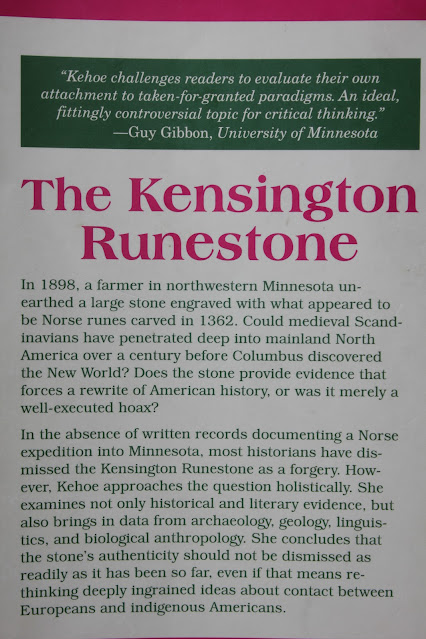PART II - Did Hanseatic Merchants in Bergen, Norway Provoke a 1362 Norse Expedition to Kensington, Minnesota?
(From back-cover copy of Alice Kehoe's book, "The Kensington Runestone.")
I see that the question of Norse fur traders possibly arriving in Minnesota in 1362 may have much to do with the difference of the men being able to get more, not fewer, furs. The Russian fur trade had been pretty much cut-off to them by the Hanse. An annual ship brought Greenland furs back to Norway, but any other furs would likely need to come from America, traded from natives, instead of through Russians. Here, then, according to Kehoe, seems to be a plausible reason for the 1362 KRS-party's expedition to Minnesota.
So, the Hanse basically invaded Bergen and took over the city and the port and cut the Scandinavians off from their centuries-old, very lucrative trade which had entailed obtaining furs from Northern Russian natives and then taking them to Constantinople. It also entailed both hazardous and lengthy trips but was very profitable when successful.
The Hanse took advantage of the Scandinavians' tremendous population decline from the Black Death, by means of forceful invasion with their army when Scandinavia was still three kingdoms fighting one another. The takeover ended up with the three kingdoms coming together against the "foreign invaders."
So, it appears that the Norse had been put in a position where they were no longer able to deal in valuable Russian furs...so perhaps the best opportunity for obtaining available furs would have entailed getting them from America...by trading directly with natives.
As a couple of asides, I believe that the "hooking together" of the two river systems from the north and from the east is likely the reason for the Norse's interest and layovers in this area, and I think two of the best evidences for Norse visitation to this region--little known about--are the two petroglyphs discovered just across the Minnesota border in South Dakota, depicting a Norse drinking horn and a Norse table knife, as seen on page 118 in Wolter's book, "The Hooked X." (There is also a plethora of Norse stoneholes in the area, such as along the Whetstone River.)
Here, then, are several pages from Kehoe's insightful book, "The Kensington Runestone - Approaching a Research Question Holistically," which I think fully addresses one plausible reason for Norsemen to have arrived in pre-Columbus Minnesota.








Comments
Post a Comment